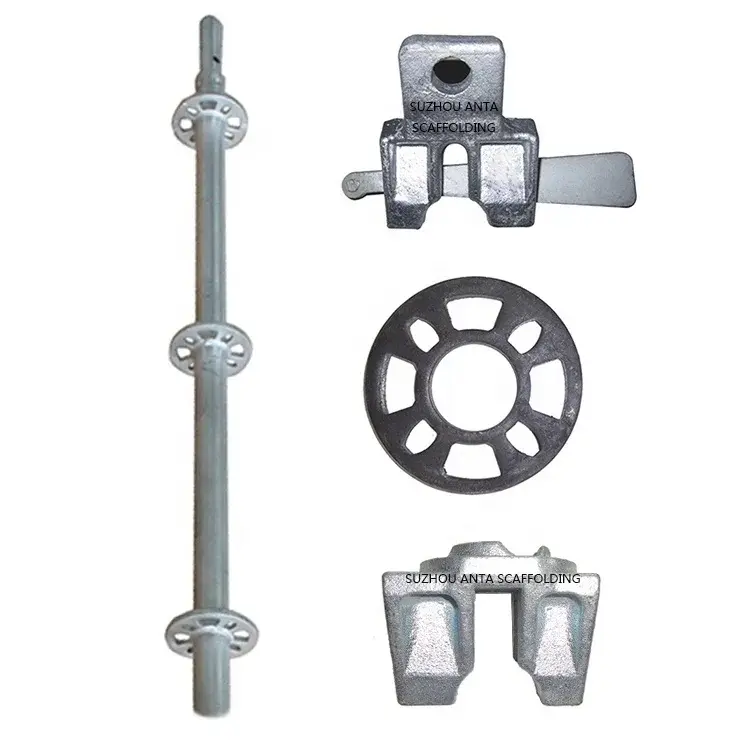Cuplock Scaffolding Load Capacity: What You Need To Know Before Use
Cuplock Scaffolding Load Capacity: What You Need to Know Before Use
When it comes to using cuplock scaffolding for construction projects, understanding the load capacity is crucial for ensuring the safety and stability of the structure. Proper knowledge of the load capacity will help prevent accidents and ensure that the scaffolding can support the weight of both the workers and materials. In this article, we will delve into the details of cuplock scaffolding load capacity and provide you with essential information to consider before using it on your next project.

Understanding the Basics of Cuplock Scaffolding
Cuplock scaffolding is a popular type of modular scaffolding system that is known for its versatility, ease of use, and durability. It consists of vertical standards with cups that allow for easy connection to horizontals at pre-measured intervals. This system provides a secure and stable platform for workers to perform tasks at various heights. Cuplock scaffolding is commonly used in construction, repair, maintenance, and renovation projects due to its efficiency and flexibility.
When it comes to load capacity, cuplock scaffolding is designed to support a specific amount of weight based on various factors such as the material used, the design of the system, and the height of the structure. It is crucial to understand these factors to ensure that the scaffolding can safely support the intended load without compromising the safety of workers.
Factors Influencing Load Capacity
Several factors influence the load capacity of cuplock scaffolding, and it is essential to consider each of them before using the system for your project. The material used in the construction of the scaffolding plays a significant role in determining its load capacity. Scaffolds made of high-quality steel are known for their strength and ability to support heavier loads compared to those made of other materials.
The design of the cuplock scaffolding system also affects its load capacity. Scaffolds designed with additional support elements such as diagonal braces and ledger beams are more likely to have a higher load capacity than those without these features. The height of the structure is another crucial factor to consider when determining the load capacity of cuplock scaffolding. Taller structures may require additional support and reinforcement to ensure that the scaffolding can safely support the weight of workers and materials.
Calculating Load Capacity
To determine the load capacity of cuplock scaffolding for your project, it is essential to perform accurate calculations based on the factors mentioned above. The first step is to assess the weight of the workers and materials that will be placed on the scaffolding. This includes considering the maximum number of workers that will be working on the scaffold simultaneously and the weight of the materials they will be handling.
Once you have determined the total weight that the scaffolding needs to support, you can calculate the safe working load (SWL) of the system. The SWL is the maximum weight that the scaffolding can safely support without risking collapse or failure. To calculate the SWL, you will need to consider the material, design, and height of the cuplock scaffolding system, as well as any additional support elements that have been included.
Ensuring Safety and Compliance
Before using cuplock scaffolding on your project, it is crucial to ensure that the system meets all safety standards and regulations. Make sure that the scaffolding is properly erected by trained and qualified personnel to prevent accidents and ensure the stability of the structure. Regular inspections should be conducted to check for any signs of damage, wear, or corrosion that could compromise the load capacity of the system.
Workers should be properly trained in the use of cuplock scaffolding and provided with the necessary safety equipment to prevent falls and other accidents. It is essential to follow the manufacturer's guidelines and recommendations for the safe use of the scaffolding and avoid overloading the system beyond its load capacity. By prioritizing safety and compliance, you can ensure that the cuplock scaffolding system is used efficiently and without compromising the well-being of workers.
Conclusion
In conclusion, understanding the load capacity of cuplock scaffolding is essential for ensuring the safety and stability of construction projects. By considering factors such as material, design, and height, you can accurately calculate the safe working load of the system and prevent accidents caused by overloading. Remember to prioritize safety, compliance, and proper training when using cuplock scaffolding on your projects to create a secure working environment for workers. By following these guidelines, you can confidently use cuplock scaffolding for various construction tasks with peace of mind knowing that you are prioritizing safety and efficiency.

